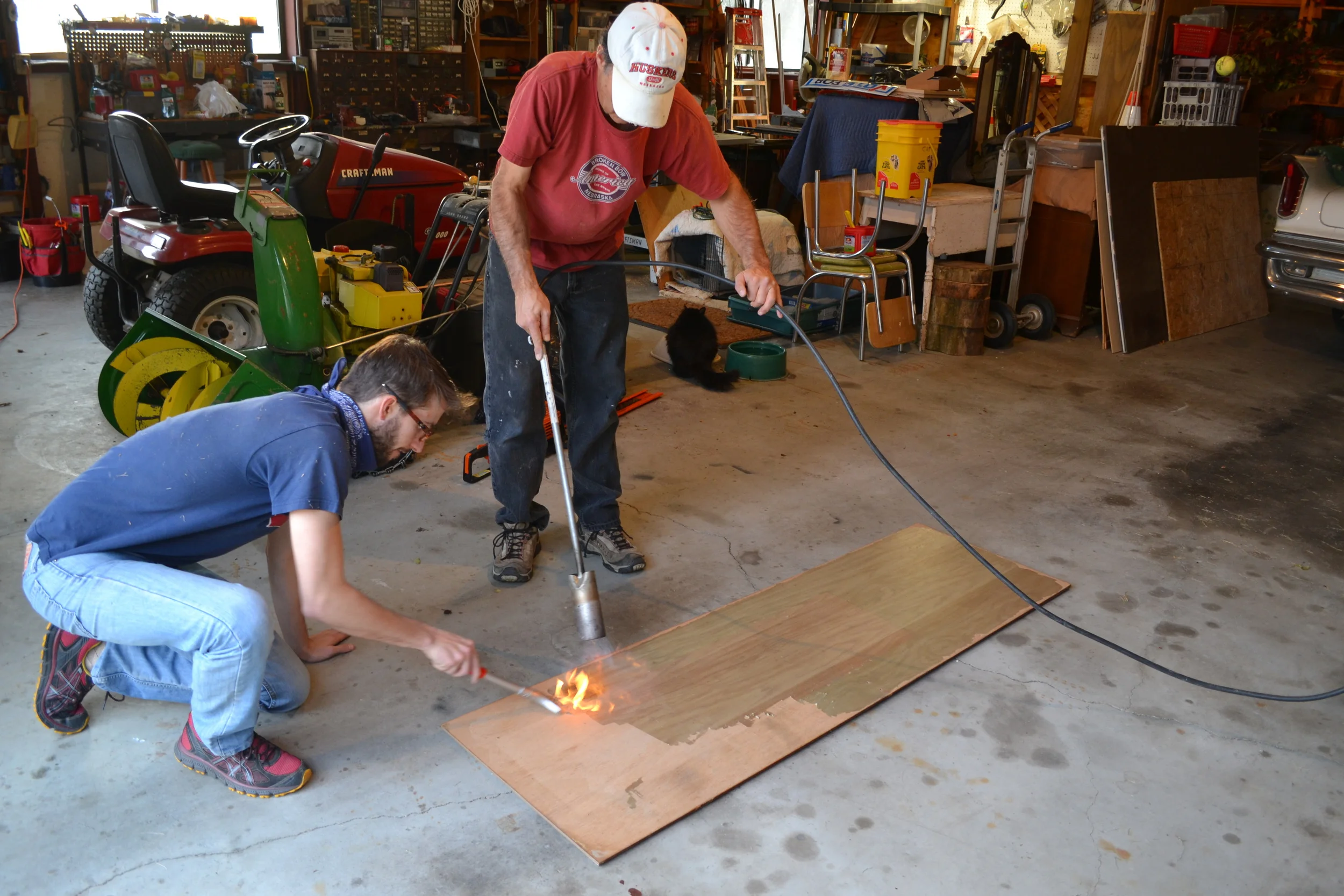Elsie and the Terrible, No Good, Very Bad Contact Paper
Some things even the greatest scientific minds will never understand: how infinity works, the hit FOX series Lost, the fate of the Roanoke Island colony, where D.B. Cooper landed, what Cameron Crow was thinking about—specifically—when he directed Aloha (working theory: ∞). Mel and I now respectively submit the following to this growing list of life’s greatest mysteries: adhesive contact paper, specifically of the woodgrain variety.
Faux-Woodgrain Contact Paper
When we first bought the Elsie, every square inch of the interior—every tiny, impossible-to-reach nook and cranny—was covered in a thin skin of faux woodgrain contact paper. In what should probably serve as the preface to all of our Camper DIY updates, we should have listened to my dad. The faux woodgrain looked as cheap as it sounds, and it made the whole interior feel like some trashy old trai…nevermind. The point is that we’d long been set on white walls. The question was whether to paint directly over the contact paper—as my dad suggested, and then suggested several times again—or to somehow strip the contact paper from the walls.
Some psychologists subscribe to the idea, called Terror Management Theory (TMT), that our entire character make-up is essentially a lie we tell ourselves to deny our own mortality. Chaos—including but not limited to the faux woodgrain catastrophe we found ourselves mired in—reminds us that our lives are out of control. In my own heroic attempt to avoid chaos, and thus my impending doom, I made the first of many questionable decisions in our trailer renovation: the contact paper had to go. But how?
We tried all the liquid strippers recommended by the hardware stores, but none of them worked. We scored it, we scrubbed it, we grunted and cussed at it—still nothing. After breaking for lunch, my dad walked out of the garage looking like an extra in Mad Max, torch in one hand, a rusty propane tank in the other, gas line drooping in between. You need to know this: he looked pretty fu**ing cool. Anyway, when a man holding a propane torch asks you to follow him to the shed, you follow him to the shed.
Elsie’s bathroom door was lying unhinged on the concrete. He opened the valve on the propane tank, then carefully lit the torch. He lowered the flame toward the door, holding it 6-10 inches away from the surface. The contact paper turned brown and then bubbled up. I grabbed a dull paint scraper and followed safely behind the moving flame. The contact paper shaved cleanly away from the wood beneath, leaving a flat, paperless surface. (Note: a blade too sharp will cut into the wood, preventing the slide necessary to move across the surface.)
Though the propane torch made for quick work on the trailer’s two full-size doors, which could easily be moved outside the trailer, we obviously couldn’t bring the post-apocalyptic weapon inside. So we downgraded to a small heatgun, which we used on the rest of the interior. By the time the last scratch of contact paper was stripped from the wall, Mel and I had spent at least 18 hours on the job (split over several days). We grew delirious, trapped inside a 16-foot trailer with a heatgun and two paint scrapers. Sometimes we hit a groove. After a long run with the scraper—the contact paper peeling smoothly behind the rays of the heatgun—Mel would lean forward and say something cocky and absurd. “That’s what we in the industry call a sustained vertical run.” Sometimes we laughed. Most of the time we sighed. More than once we said, “Shit, don’t hold the gun too close.”
Let this be a lesson to all of you considering contact paper for your next project. If you choose to use it, some day, some one will hate you for your decision.



